
Bulgaria is an extraordinary country at the crossroads between Europe and Asia. Its culture is a living history that combines Thracian, ancient Greek, Byzantine, and Roman influences. Visitors are spoiled for choice when it comes to tourism opportunities.
Whether you are a history buff, gastronome, or a beach bum, Bulgaria offers something for every type of traveler. Check out what to see and do in Plovdiv – one of Bulgaria’s oldest inhabited cities. But first, here’s some history on Plovdiv…
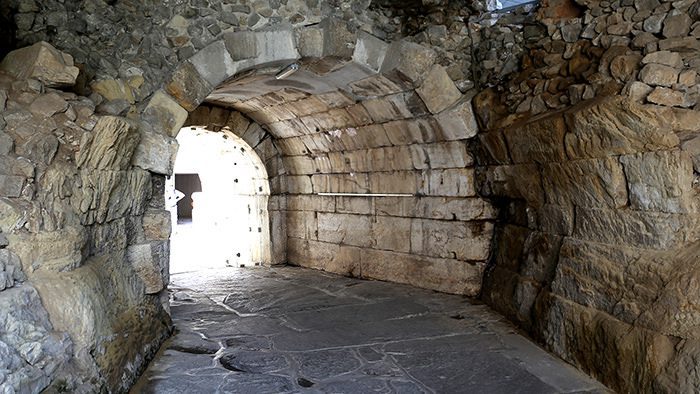
The city of Plovdiv was ranked 6th amongst the oldest living cities in the world and the first in Europe by the Daily Telegraph. Plovidv was also included in the Huffington Post’s article, “10 Ancient World Cities You Can Still Visit.” Plovdiv is the second-largest city in Bulgaria after Sofia. What was originally a Thracian settlement evolved into a bustling Roman city, but even before that Plovdiv was home to a Neolithic settlement dating back to 4,000 B.C. Over the centuries Plovdiv has been called Eumolpia, Trimontium, and Paldin. But its most famous name was Philippopolis, which literally translates into “City of Phillip.” Phillip II of Macedon (father of Alexander the Great) conquered the city 342 B.C. and named it in his honor. By 46 B.C. the city landed in the hands of the Roman Empire. Plovdiv eventually became the largest and most prosperous city in the province of Thrace.
“Plovdiv is the biggest and loveliest of all cities. Its beauty shines from faraway.” -Lucian of Samosata, Ancient Greek satirist (120 – 200 A.D.)
It later fell into Byzantine and Ottoman hands, before becoming part of Bulgaria. Plovdiv remains one of the most culturally significant destinations in the Balkans. Walking around the city will reveal remnants from several historical periods including ancient Thracian, Roman, Ottoman, Medieval, and the Bulgarian National Revival. Plovdiv is one of four Bulgarian cities shortlisted to be the “European Capital of Culture 2019” – a title it has a very good chance of winning due to its several monuments and active program of events.
Click here to watch our episode of the top things to see and do in Plovdiv
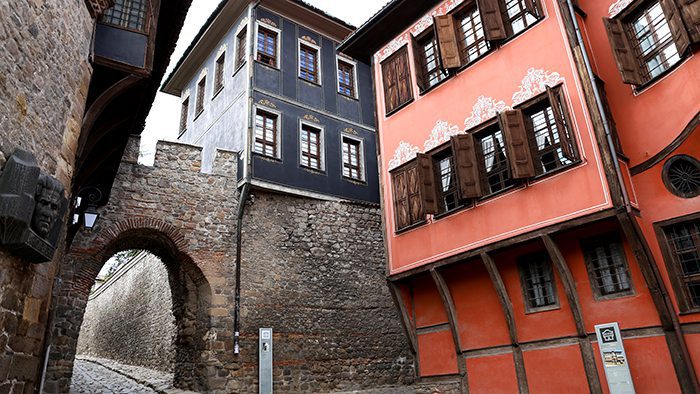
Plovdiv has a vibrant and bustling city center. By contrast, the Old Town is much more quiet and laid back. Both areas are pedestrian-friendly, making it easy for visitors to take in the main sights on foot. The city center, though modernized and boasting an array of boutiques, cafés, and hotels, does still contain some historical sites.
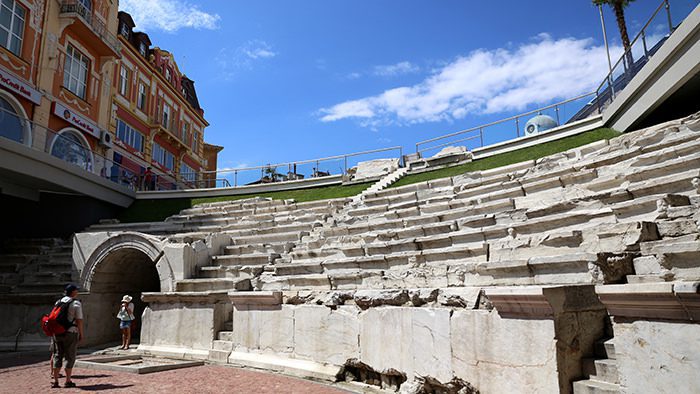
A good place to get introduced to Roman Plovdiv is by going to see the Stadium (Knyaz Alexander 1) near the Tourist Information Center in Dzhumaya Square. Located beneath modern Plovdiv at the original level of ancient Philippopolis, the Stadium was commissioned by Emperor Hadrian in the 2nd century. The original construction had seating for over 30,000 spectators. What remains is a chunk of the Stadium’s original 14 marble rows. Visitors will see part of the track, semi-circular rows of seats, and a panoramic visual replica of the original Stadium.

No proper Roman city existed without a Forum; an open public square dedicated to economic, religious, and political matters. A Forum served as the marketplace and assembly point for Roman cities. The ruins of the Ancient Forum are located behind the main post office on General Gurko Street. The northern part of the Forum complex contains the Odeon; a 300-seat theatre used for council meetings, concerts, and theatrical performances.
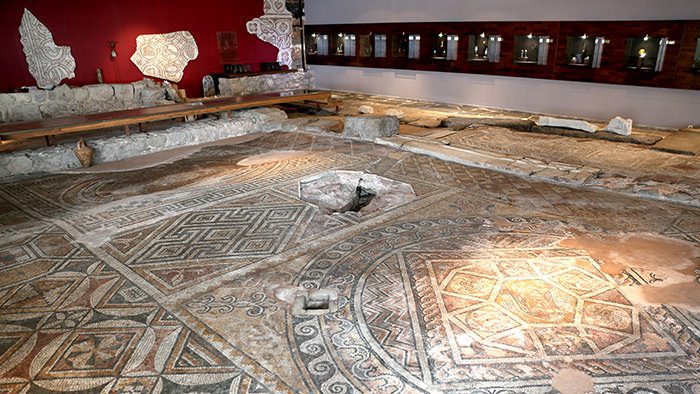
Under the overpass of Tsar Boris III Obedinitel Blvd. are the ruins of a 3rd century aristocratic house known as “Eyrene’s House.” Housed within the Cultural Centre Trakart are several beautiful floor mosaics that suggest there was a high quality mosaics studio in Philippopolis at the time. The Trakart Cultural Centre also has an exquisite collection of ancient ceramic and glass artifacts spanning over 1,000 years. The collection contains ritualistic, utilitarian, and decorative objects made by the Neolithic people of Plovdiv, as well as Thracians and Romans.
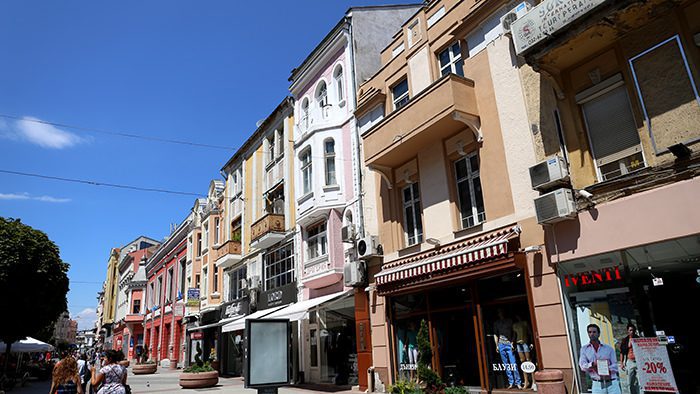
Plovdiv’s Main Street, Knyaz Alexander I, runs from the Tsar Simeon Gardens through Dzhumaya Square, at which it turns into ul. Raiko Daskalov. It then crosses the Maritsa River as a covered pedestrian bridge. The Main Street is wide and fully pedestrianized, lined with cafés, shops, and trees; perfect for strolling day or night.
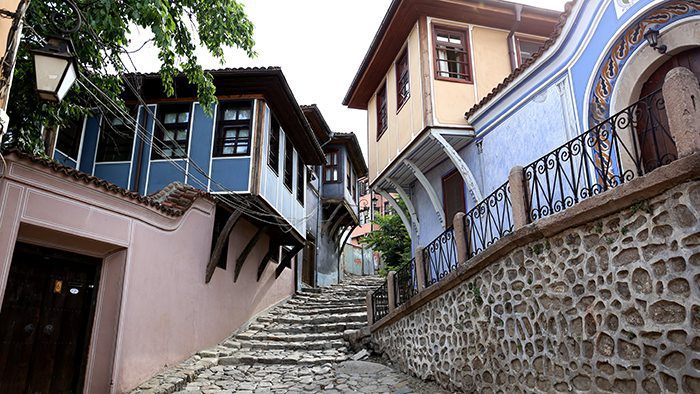
The Old Town has a completely different look and feel. Cobblestone streets wind between colorful 19th century homes featuring Bulgarian National Revival architecture (a cultural movement by Bulgarians to regain their identity from the Ottomans). Homes from this period were characteristically large, fancy, and richly embellished with murals, columns, porches, and handmade furniture. Many of these homes are now museums that are open to the public.
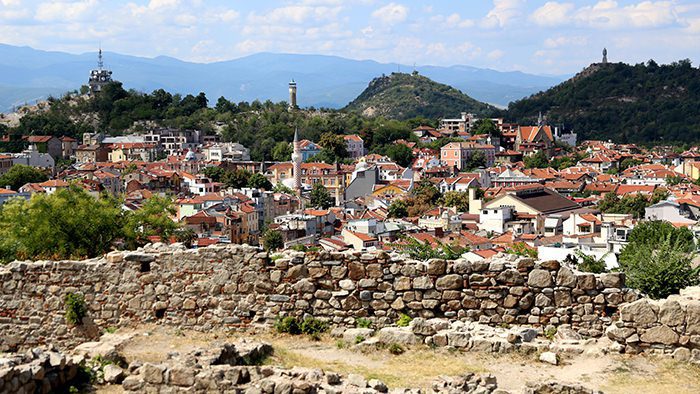
Walk up Hissar Kapiya Street, through the eastern gate of the Philippopolis citadel. It will lead you up to Nebet Hill, a Roman fortress complex that offers beautiful bird’s eye views of the city and the Maritsa River. Among the Museum-Houses of the Old Town there are the Balabanov (57 Konstantin Stoilov), Hindliyan (4 Artin Gidikov) and Nedkovich Houses (Tsanko Lavrenov, 3). Each Museum-House has an admission cost of 5 BGN for adults and 1 BGN for children and students. For 15 BGN you can buy a ticket that grants entry to all three plus the Zlatyu Boyadzhiev Gallery, Dimitar Kirov Exhibition, and the Theatre.
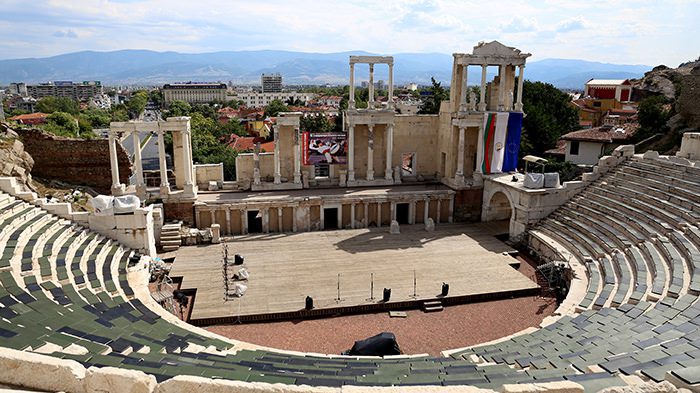
The Ancient Roman Theatre is arguably the most impressive of all the things to see and do in Plovdiv. It is also one of the best-preserved ancient theatres in the world and still used today for a variety of performances. In fact, the Plovdiv International Folklore Festival is held here every year – an event that brings in hundreds of spectators from all around Bulgaria who come to watch traditional songs and dances from other countries. Plovdiv also hosts the annual International Festival of Jazz. This three-day event takes place in late fall.

2, Dr. Stoyan Chomakov Street (Old Town)
+359 32 625 654
Housed within the 1847 historical Rennaissance home of Argir Kuyumdzhiouglu, the mansion was built by master builder Hadzhi Georgi. Exhibition includes jewelry, costumes, musical instruments, antique furniture, weapons, and pottery.
Bulgarian Revival Exposition
1, Tsanko Lavrenov Street (Old Town)
+359 32 623 378
This rich photographic exhibit is located inside the 19th century home of Dimitar Georgiadi, one of Plovdiv’s richest merchants. The home is quite impressive with its exterior murals and bright crimson hue. It is located right next to the eastern gate of the Philippopolis citadel.
Tsar Simeon Garden
At the southwest end of the city’s main street is this beautiful landscaped space that was designed by Swiss-born Lucien Chevalas during Ottoman rule. The garden features lakes, musical fountains, sculptures, and monuments dedicated to Bulgarian heroes. There are also temporary sculpture exhibits throughout the year.
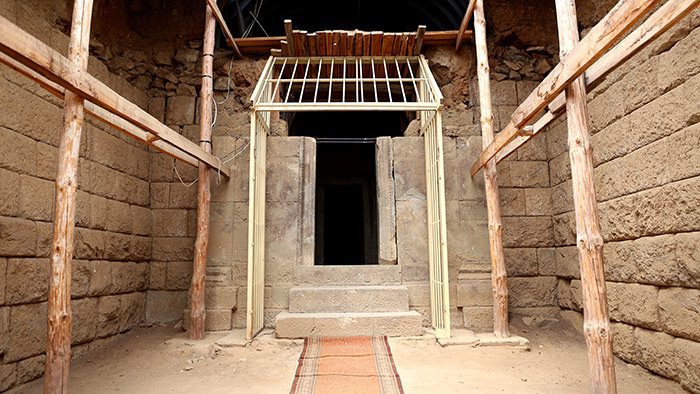
A great day trip from Plovdiv are the ancient Thracian royal tombs at the Starosel Thracian Temple Complex, which date back over 2,500 year to the end of the 5th and beginning of the 4th century B.C. Thracians buried their elite in underground tombs under mounds. These hills were then protected by concentric rows of stone blocks. But what really stands out about the tombs are their richly decorated interiors, oftentimes painted with bright colors and having beehive-style ceilings. The Starosel tombs are the oldest royal tombs to have been discovered. There are six temples here, of which only two are open to the public (Chetinyova Mogila and Horizon Temple). Finds from the sites can be seen at the Archaeological Museum in Sofia. The Horizon Temple is a short drive away and is currently in a state of disrepair, however it possible (and free) to enter inside. Entrance to the Starosel Thracian Temple Complex is 3 BGN. Guided tours are included in the price of the ticket. It takes about one hour to drive from Plovdiv to Starosel.

The town of Hisarya sits 40 kilometers north of Plovdiv. Known as one of Bulgaria’s top spa centers, Hisarya has 16 natural mineral springs and boasts a pleasant, sunny climate year round. Hisarya has been continuously inhabited since the 5th century B.C. Massive fortifications and public buildings were erected in the 3rd century A.D. under Roman Emperor Diocletian; the ruins still visible today. Among them are baths, city walls, streets, tombs, and an amphitheatre. Many of the objects uncovered in Hisarya are housed in the town’s Archaeological Museum (2 BGN admission / Open 8:30 a.m. to 11:30 a.m. and 1:30 p.m. to 4:30 p.m. / Closed Mondays). Many visitors opt to stay for a night or two in one of the town’s many spa hotels.
Book your Plovdiv 2-Hour Sightseeing Tour here!

If you plan to spend a couple of days exploring Plovdiv, we advise choosing a hotel in the city center. Hotel Odeon is situated right behind the Ancient Forum, so you won’t be bothered by the noise of the main street, but will still be walking distance from most of Plovdiv’s attractions. Hotel Odeon has eight large guestrooms, two of which are apartments, and one is a luxury studio. All the rooms have cable TV, Wi-Fi, and air conditioning. The hotel also has a restaurant on the ground level, which serves breakfast, lunch, and dinner daily. Things we like are the family-friendly vibe, clean rooms, and close proximity to the city center. Prices range from 80 to 120 BGN.
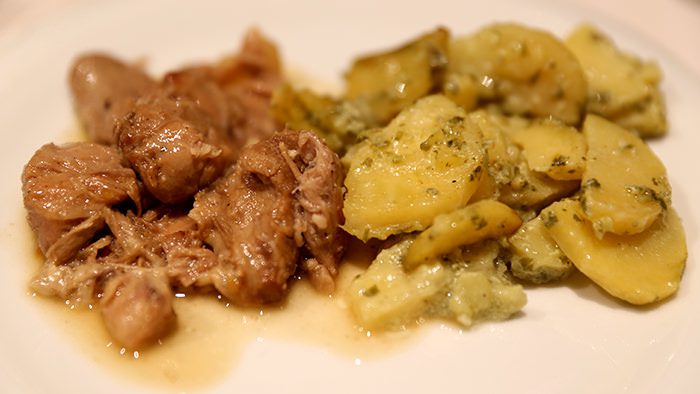
Brestovitsa Wine House looks like an unassuming wine shop, but is actually one of Plovdiv’s best kept secrets. Just ring the bell and head downstairs to try some amazing food and wine pairings. Owned by Porteva family, this simple, elegant restaurant is the best place to sample delicious Bulgarian wines. A tasting menu will take you through seven incredible varieties, including merlot, rubin, and mavrut. You’ll try the Portiva family’s very own label, Bendida, and get to indulge in homemade dishes designed to match the wine selection of the night. Brestovitsa Wine House frequently hosts wine club meetings and tastings, so it is highly advisable that you reserve a table in advance.
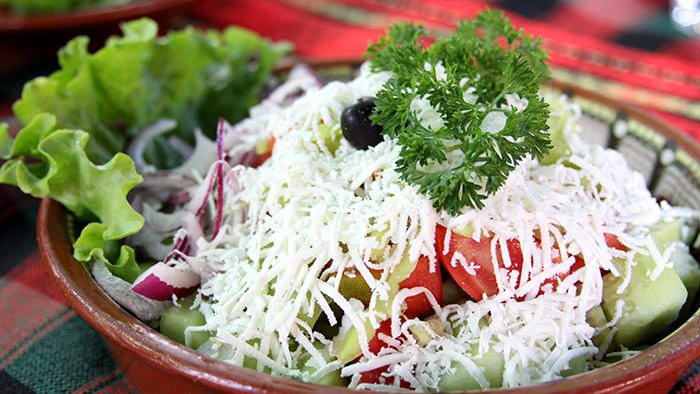
With five locations throughout Plovdiv, Restaurant Dayana is always a crowd-pleaser. This group of rustic, casual eateries serve up the most popular dishes in Bulgarian cuisine – “kavkazki” style skewers, traditional sac platters, scrumptious appetizer dips, homemade breads, barbecued meats, and refreshing salads. Great for lunch or dinner, the Dayana restaurants are reasonably priced and have an over-the-top quirky folk theme décor. Dayana is great for large groups and families, plus the portions are super generous (available in 300 grams, 500 grams, 800 grams, and 1,200 grams!)

Restaurant Megdana is probably the most fun you’ll have while dining out in Plovdiv. The setting is a traditional “mehana” with a beautiful interior garden, large indoor dining space, and plenty of outdoor seating around the landscaped courtyard for the best views of the nightly performance. Restaurant Megdana hosts traditional Bulgarian folk dances almost every evening. This place gets packed on performance nights, so it would be wise to make a reservation at a lower level outdoor table in advance so you can enjoy the show. The food, like the entertainment, is absolutely fantastic. Juicy cuts of meat, super-fresh vegetables, family recipes, and big portions. Though it is a traditional mehana, the place calls for smart casual attire. Don’t forget your camera.
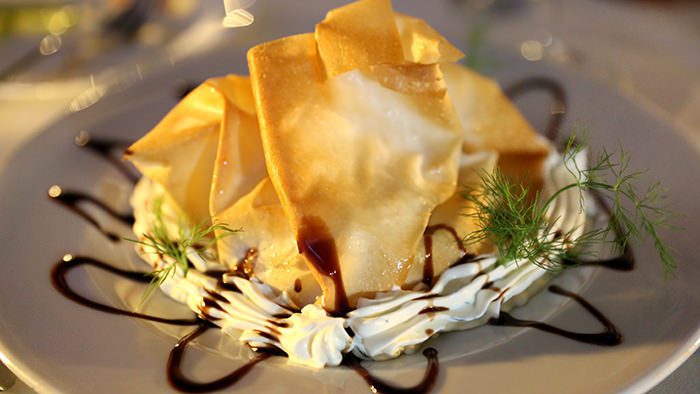
Philippopolis is perhaps the fanciest restaurant in Plovdiv, nestled in a quiet location near the entrance to the old town and situated in a stately, elegant mansion. Philippopolis offers a beautiful and romantic dining experience, especially if you choose to sit outside on the terrace. The house features a private art gallery with works by Bulgarian master painters. The menu is Mediterranean and Bulgarian with an assortment of daily specials and chef’s recommendations. Philippopolis serves tasty fusion food in a refined, elegant setting. Reservations are highly recommended.
Time zone: GMT +2
Electricity: 220-240 Volts. Electrical sockets take the European 2-pin round plug. For 110-120 V (U.S. and Canada) appliances, a plug adapter, and in some cases a voltage converter is required.
Currency: The national currency is the Bulgarian Lev, which is made up of 100 stotinki. The symbol for the Lev is “BGN”
Tip: Tipping 5 – 10% of the total bill is customary at bars and restaurants.
Tourist Information Center of Plovdiv: Central Square Knyaz Alexander I Street (+359 32 656 794 / tourism@plovdiv.bg)
Tours: The Municipality of Plovdiv provides free walking tours every Wednesday at 9 a.m., 9:30 a.m., 6 p.m., and 6:30 p.m. Tours are given in Bulgarian and English. Call the Tourist Information Center to reserve your spot.
Museums hours of operation: Summer working hours (April – October) 9 a.m. to 6 p.m. Winter working hours (November – March) 9 a.m. to 5 p.m. Closed Mondays. Free admission first Thursday of each month for students and retirees.
Have you been to Bulgaria? Tell us about your suggestions of what to see and do in Plovdiv!
Counter
101 Countries • 1432 Cities
Andrey Andreev says:
Hey, your lists are good. I just want to suggest a new-old place – The House of Hindliyan we have been there tr interior is amazing and for me it is a must see place in the Old Town of Plovdiv, more than the Ethnographic Museum. I can’t upload a photo but you can see some pictures there: https://www.andrey-andreev.com/en/enjoy-plovdiv-bulgaria/
Heather Karstens says:
We will be in Plovdiv this spring. Our main question is: is there parking near old town so we can get out and walk. Also is there a map of old town that we can read?
David says:
Hi Heather,
Yes I am pretty sure there is a underground parking in the new town. The old town is very small, but the tourism board has a map. Let me know if you need anymore information.
Janis says:
I’ve been living in Lithuania but the beaver situation is getting out of hand, so thinking of relocating here, looks great.
Adriana Vasilkova says:
Great post! Plovdiv si definitely one of the places in my bucket list 🙂 Thank for sharing
Plovdiv, Bulgaria | frugaltravelbug says:
[…] https://davidsbeenhere.com/2014/07/11/travel-guide-plovdiv-bulgaria-see/ http://www.freerangetravel.com/things-to-do-and-see-in-plovdiv-bulgaria/ http://wikitravel.org/en/Plovdiv […]
Travel Guide | Travelguide says:
[…] Travel Guide to Plovdiv, Bulgaria – Davidsbeenhere https://davidsbeenhere.com/Bulgaria is an extraordinary country at the crossroads between Europe and Asia. Its culture is a living history that combines Thracian, ancient Greek, Byzantine, and Roman influences. Visitors are spoiled for choice when it … […]